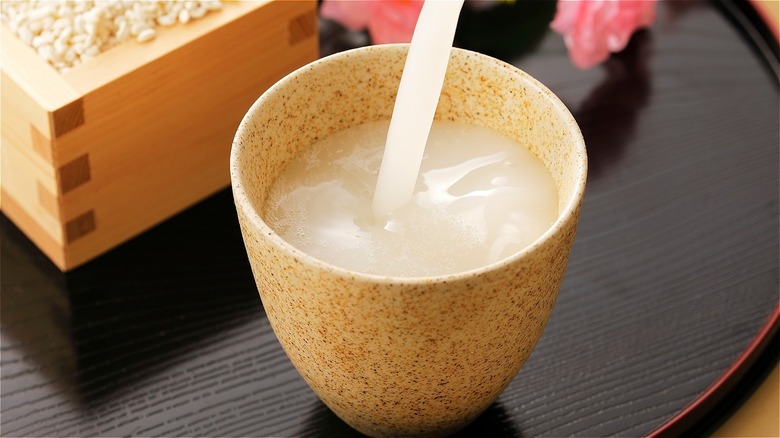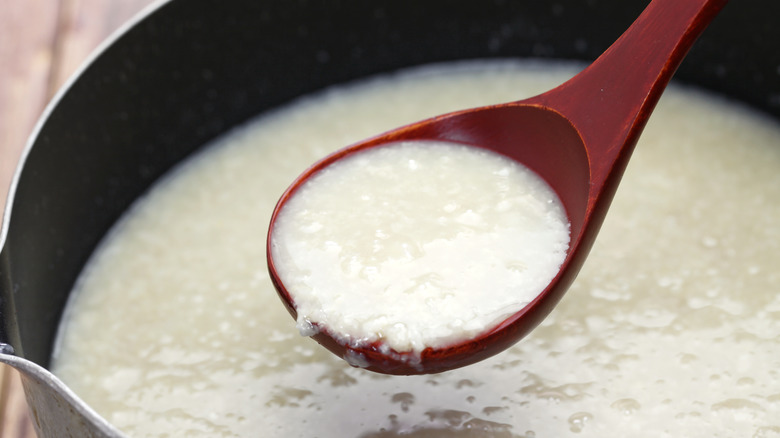One Of Japan's Oldest Drinks Is A Cozy, Non-Alcoholic Twist On Sake
When it comes to fermented foods, you're probably familiar with the tangy-yet-savory flavor profiles of kimchi, sauerkraut, and miso. But would you believe that something fermented could actually taste pleasantly sweet instead of strong and pungent? If you're a lover of Japanese cuisine and culture, you've undoubtedly tried your fair share of unique sake flavors over the years. However, you may not have heard of this thicker, non-alcoholic type of sake that originated in Japan centuries ago — amazake.
Literally translated to "sweet sake," the history of amazake dates as far back as Japan's Kofun period. It's a version of sake that faded in popularity until recent years when the world began its health craze, focusing on using all-natural beauty and wellness products. Amazake is beloved in its country of origin for its numerous benefits, so much so that the traditional drink has been playfully called as an" Injectable IV drink" due to the gluten-free and easily digestible nutritional elements it contains, including energy-converting glucose, vitamin B, probiotics, dietary fiber, and all nine essential amino acids (via BBC).
So how does this sweet beverage differs from the traditional Japanese alcoholic drink – sake?
Amazake is made with koji rice and is unrefined
Amazake is a staple drink enjoyed during Japanese New Year and Hina Matsuri (Doll Festival) celebrations and is usually enjoyed warm during the colder months (via Just One Cookbook). It's different than sake mainly because of its lack of alcohol and unrefined state. Alcohol-free amazake is made with rice, water and koji rice that is covered with Aspergillus oryzae, a mold that aids in the fermentation process. It's thick and cloudy with a sweet taste, whereas sake is a clear beverage with a nutty taste and hints of fruity flavor notes. There also exists a slightly alcoholic version of amazake called sake kasu, which is made with sake lees — a sake byproduct — instead of koji rice, and contains 8% alcohol, per Bokksu.
While you can buy amazake at grocery and convenience stores in Japan, they are typically heated to preserve freshness, eliminating all the good vitamins and nutrients locked within the grain, according to Chef JA Cooks. The good news is, you can also make amazake at home by buying unheated koji rice online. When concocting your own amazake, you'll still want to keep an eye on the temperature to avoid killing the enzymes responsible for the fermentation process. Once the fermentation is done, which takes around six hours, you'll get to experience the sweet, all-natural goodness of amazake for yourself. It's recommended to store amazake in the refrigerator and consume it within a week for optimal flavor.

